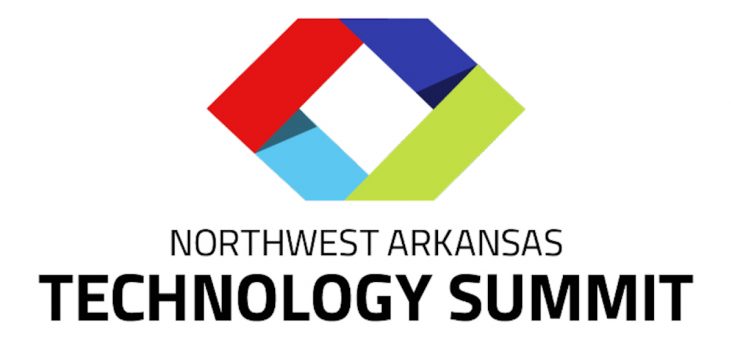Tyson Foods’ top execs talk about future tech for the global company
by October 20, 2020 3:41 pm 1,695 views

Tyson Foods CEO Dean Banks said his journey to Tyson Foods took some interesting turns – including military service and medical technology work – but he feels at home leading the protein giant through its technology transformation.
Banks said he grew up in southwest Ohio but his grandparents ran a family farm in Kentucky where he spent many summers learning to appreciate that line of work. He served in the U.S. Marine Corps and then turned his attention to medical technology where he spent several years in life sciences, genetic engineering as well as orthopedics and medical devices. Banks said this got him interested in early-stage innovation and that took him back to his passion for technology from a business perspective.
Banks said he was inspired to see knowledge and technology embedded into processes and completely transform the operation.
“Along that time I met John Tyson and began to talk about what’s possible in the food landscape and animal agriculture, so I joined the board (in 2017) and quickly saw Tyson was already applying technology and they were ahead of where I thought they would be,” Banks said during remarks at the virtual Northwest Arkansas Technology Summit on Tuesday (Oct. 20).
He said the digital transformation was already taking place under the leadership of Chief Information Officer Scott Spradley. He joined Tyson in mid-2017 from Hewlett Packard, where he worked as CIO and led an information technology separation of Hewlett Packard Enterprise and merger with Computer Science Corp to form a $25 billion publicly-traded company.
During his address, Spradley said he was drawn to Tyson Foods after spending decades in the technology world of Silicon Valley because of his fond memories of learning to fish and hunt in rural Arkansas and a desire to transform business at scale. Spradley said he was always curious about technology and tried to hack into his old Commodore system as a youngster. After a short stint working for a congressman, Spradley said he ran into an old friend who wooed him into technology with the opportunities to effect real change.
“I came to Tyson Foods in June 2017 and we have driven fast and driven hard to try and modernize this company,” he said during the interview.
Spradley said the digital transformation as a giant undertaking. He said taking an 85-year-old company born analog and then try to break down each component and look at what could be driven better by future tech began in 2017. He said it has been important to get the foundation right so Tyson can build future capabilities on it.
“The scale is massive but we ought to be a technology company that also happens to be the preeminent protein company on the planet,” he said.
Banks said Tyson has been worked at automating its operating systems so it is easier to see everything going on throughout its massive business. Early work of adding predictive capacities into the system is underway and Banks said this is going to allow for better optimization of the business.
He foresees a time when consumers can look at their dinner plate and know where the food came from and the sustainability practices around its production. He said technology allows for constant monitoring and tracking so consumers can soon look at their phone and see fields of hay hundreds of miles away that is part of the supply chain. Banks said the farm-to-fork mission should create more intimacy around consumers and Tyson Foods if the company can help them see food sources.
“Families today are further removed from the farm, but through vision technology and scan processes, it will be possible for consumers to feel a closer connection to the farm via technology. Operationally this will be huge because when we have a grain spill, we will quickly be able to locate the issue and mitigate the impact. Unlike having to comb through piles of paper logs taking days to identify,” Banks said.
Spradley said Tyson is coming from behind those digitally-born organizations that already move more nimbly and run far more efficiently. He said Tyson is ahead of many of its peer food companies but there is still work to do. He cautioned that just because some processes could be automated, doesn’t mean it should be if the product quality is compromised. He said computer vision and drone deliveries hold potential opportunities but Tyson will not let shortcuts reduce product quality.
Banks and Spradley each talked about the challenges of deploying technology at scale in the food processing business. Spradley said the human hands are incredibly nimbly and the dexterity of the human hand is still hard to replicate in robotics. The executives said a common mistake is to try to apply technology to a job that humans are doing, adding that they have to rethink processes in the supply chains and apply robotics to enhance and support the skills of workers.
“Having predictive capabilities will help us know how much to produce and better control those costs. Autonomous robots enhanced with machine learning can make decisions in the moment and predict that something is going to fail and help to prevent costly food recalls. Robotics will also be used to do heavy lifting and processes that are the highest cost and highest danger. That’s where we start,” Spradley said.
Banks said Tyson is working with regulators on food safety legislation that is evaluating how computer vision and cameras can enhance inspectors’ performances allowing for less downtime. He said the collaboration has allowed Tyson to talk with the U.S. Department of Agriculture about what is possible with technology. He said computer vision will help quality control and inspection efficiencies.
